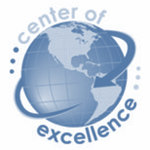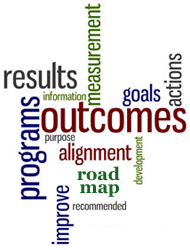 As I reflect on the hundreds of contact centers that I’ve served across 28 years in this industry, one thing stands out: Most contact center leaders aspire to be “best in class” (or “world class”). Beyond the obvious bragging rights, they have a sense that excellence produces superior customer (and agent) experiences and delivers tangible bottom line benefit – i.e., higher revenue and/or lower costs.
As I reflect on the hundreds of contact centers that I’ve served across 28 years in this industry, one thing stands out: Most contact center leaders aspire to be “best in class” (or “world class”). Beyond the obvious bragging rights, they have a sense that excellence produces superior customer (and agent) experiences and delivers tangible bottom line benefit – i.e., higher revenue and/or lower costs.
We’ve documented best practices in a number of areas and made them available on our resources page. [Not surprisingly, they’re the most popular downloads!] They also play a critical role in our Efficiency and Effectiveness Evolution Spectrums® (E3 Spectrums®)[1] tool through which we assess a contact center’s performance against best practices in each of 16 categories:
| Strategy
Organization Operations & Processes Contact Center Support Workforce Management |
Quality Assurance
Training Metrics Facilities Architecture Routing |
Reporting & Analytics
Other Performance Tools Self-Service Agent Desktop Technology Support |
 We use this tool to educate leadership on the state of their center and to guide change initiatives and investments. Thereafter, we work with them to define the resource requirements and investments that will create positive outcomes for their companies, their centers, and their customers. An annual check-up examines progress on goals, evaluates current challenges and priorities, and sets the next series of action plans and investments in motion.
We use this tool to educate leadership on the state of their center and to guide change initiatives and investments. Thereafter, we work with them to define the resource requirements and investments that will create positive outcomes for their companies, their centers, and their customers. An annual check-up examines progress on goals, evaluates current challenges and priorities, and sets the next series of action plans and investments in motion.
Funding for third party contact center assessments can prove problematic for some centers. Some try to self-assess. Others opt for “free” offers from vendors, or services that come with technology purchase. There are several reasons why these approaches don’t produce the best outcomes.
Self-assessments tend not to get done (or done well). Most centers face a chronic shortage of time. They’ve got too much on their plates, and the pressure of daily “have to dos” overwhelms the “ought to dos.” If the self-assessment gets any attention, it generally lacks the thoroughness of an independent audit. And, of course, the person responsible may lack the requisite experience and experience.
Self-assessments tend to lack objectivity. Preconceived notions about the center’s operation can influence feedback, especially to the extent that it impacts compensation, operating budgets, and capital expense. Moreover, reviewers aren’t likely to challenge “the way we’ve always done it.” Other practices may be perceived as “sacred cows” through pride of ownership. And staff may not be forthcoming with a fellow employee or manager for fear of reprisal. [We frequently surface issues in focus groups about which management is oblivious!]
Self-assessments tend to lack credibility. A contact center leader may know they need more staff to meet goals but can’t get the buy-in from leadership. Similarly, requests for technology investment can look like pursuit of the latest shiny toy without a compelling justification for purchase. Or defenses go up against process changes that require engagement from other departments. An outside voice can bring credibility to these needs and more, supported by a structured, phased plan and business case.
Vendor assessments can similarly lack objectivity and credibility. Vendors may have experienced professional services personnel, but they focus on their own products and look for opportunities to sell them. As such, these assessments do not necessarily yield a comprehensive roadmap leading to improvements for your center and customer experience. Outcomes generally point toward implementing new products.
In short, it takes a deep understanding of best practices and the proper focus and motivation to truly assess how a center is doing and to develop the path to move from the current state to the desired future state. Among the potential paybacks for an investment in outside expertise:
- Reduced work load through effective use of self-service and assisted service channels
- Reduced call center labor requirements by lowering AHT, minimizing transfers, streamlining processes, and providing agent access to the right information at the right time
- Lower agent turnover, resulting in lower hiring costs and more experienced staff to handle customer contacts
- Improved customer experience through appropriate contact routing and handling which translates into increased loyalty
- Increased revenue through improved cross-selling and up-selling
- Prioritized investments in people, process, and technology to reap the greatest benefit from all of the foregoing
Contact us for more information.
[1] Efficiency and Effectiveness Evolution Spectrums® is a registered trademark of Strategic Contact, Inc.
